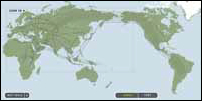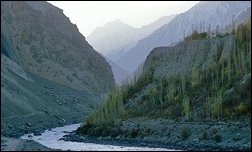 My last normal job — the 9-to-5 kind — was as an assistant at [Oliver Stone’s](http://imdb.com/name/nm0000231/) production company. At the time, he was in post-production on [Natural Born Killers](http://imdb.com/title/tt0110632/), and developing future projects, one of which was a remake of Planet of the Apes.
My last normal job — the 9-to-5 kind — was as an assistant at [Oliver Stone’s](http://imdb.com/name/nm0000231/) production company. At the time, he was in post-production on [Natural Born Killers](http://imdb.com/title/tt0110632/), and developing future projects, one of which was a remake of Planet of the Apes.
Any version of Apes must tackle the basic question of, “How does the hero get stuck on a planet full of goddamn apes?” Screenwriter [Terry Hayes’s](http://imdb.com/name/nm0371249/) adaptation forewent rockets and crash-landings, and instead had our hero (or heroes, it’s been a while) traveling backwards in time through mitochondrial DNA. The device itself didn’t make a lick of sense, but it all felt very [Michael Crichton](http://www.crichton-official.com/): with enough jargon, almost anything sounds plausible.
The Terry Hayes/Oliver Stone version never got made, but it was my first introduction to mitochondria, which are fascinating relics we all carry with us. Essentially, they’re like little power plants inside our cells that are only vaguely related to us. We inherit them only from our mothers, which means geneticists can use mitochondrial mutations to track back lineage, determining who is related to whom, in a very broad sense.
So it was with my Planet of the Apes memory that I was intrigued by a post on Kevin Kelly’s very geeky [Cool Tools](http://www.kk.org/cooltools/archives/000923.php) feed about [National Geographic’s Genographic Project](http://www.nationalgeographic.com/genographic/). It’s an attempt to learn more about how humanity spread out around the globe by doing genetic testing on indigenous populations. The timing has become somewhat urgent, because people don’t stay put the way they used to, and they don’t always marry within their ethnic/tribal groups. In a generation or two, it may be very difficult to say exactly whose genes are whose.
National Geographic’s program is actually a kit you can order, which includes swabs for taking samples from the inside of your cheek. You mail the samples in, and a lab processes them. A few weeks later, you can enter your special code number on their website, and pull up a history of where you came from, genetically. For women, they track mitochondria. For men, they track the Y-chromosome, which is passed from father to son.
The home-test version is pretty rudimentary, and is really intended mostly to fund the larger project of testing indigenous groups. But it ended being pretty fascinating anyway.
The test revealed that I am a white male of European descent.
No shocker, there. My family is largely German, with a little English and Scottish thrown in. This translates to Haplogroup R1B (M343). I’d venture that most white guys reading this would be similar, if not exactly the same. But what’s more interesting than the result is the journey, which National Geographic charts really well. The report generates a map which shows where your genetic line branched out, in my case charting the journey from Africa (M168), through Central Asia (M9), and finally to Europe, where they kicked the shit out of those Neandertals.
 For instance, my ancestors travelled through the Pamir Knot, which I’d never heard of. But looking at the picture, you realize that somewhere back in history, some relative lived there. Hunted there. Died there. It was 40,000 years ago, but it’s still in my blood.
For instance, my ancestors travelled through the Pamir Knot, which I’d never heard of. But looking at the picture, you realize that somewhere back in history, some relative lived there. Hunted there. Died there. It was 40,000 years ago, but it’s still in my blood.
And perhaps more importantly, it’s a shared history with pretty much anyone in the Northern Hemisphere — the Eurasian Clan, which includes Native Americans.
All of this got me thinking more about my long-gestating (or perhaps dead; it’s hard to say) adaptation of Tarzan at Warner Bros. One of the fundamental challenges with Tarzan is finding a way to handle race and ethnicity; having a bunch of white people fight over Africa brings back unwelcome memories of colonialism. My answer was to build the Mother Africa meme deeply into the story. No matter where you come from, no matter what color your skin, you’re related to exactly one African man who lived 31,000 to 79,000 years ago.
To me, that’s the Joseph Campbell/Star Wars-y aspect of Tarzan. Africa is destiny.
My little genographic field trip won’t advance science much, nor will it move Tarzan out of development limbo. But it made for a nice diversion. For $107.50, it’s a nice family project, particularly if your kids are old enough to understand why you’re scraping the inside of their cheeks. It’s a nice way of demonstrating the connectedness of things, and helping break down common assumptions of “us” and “them.”